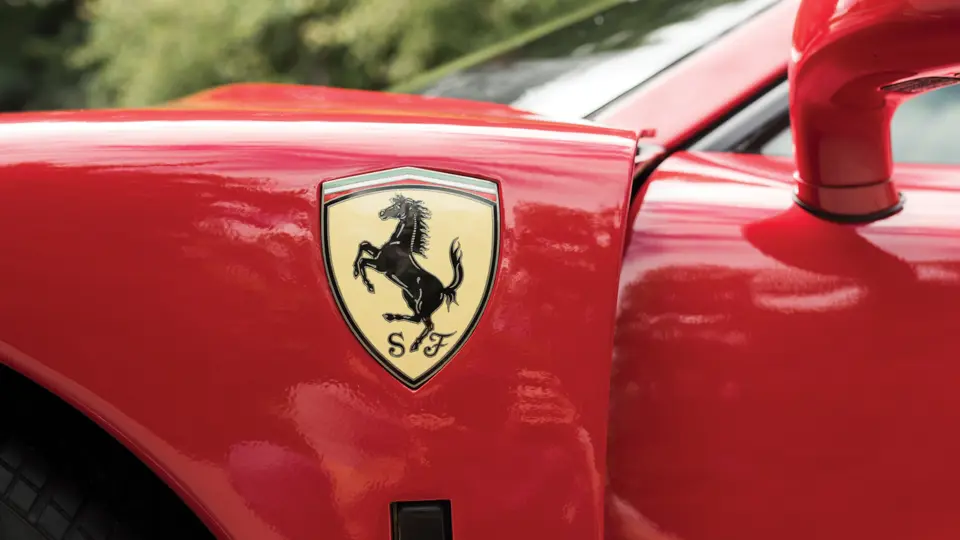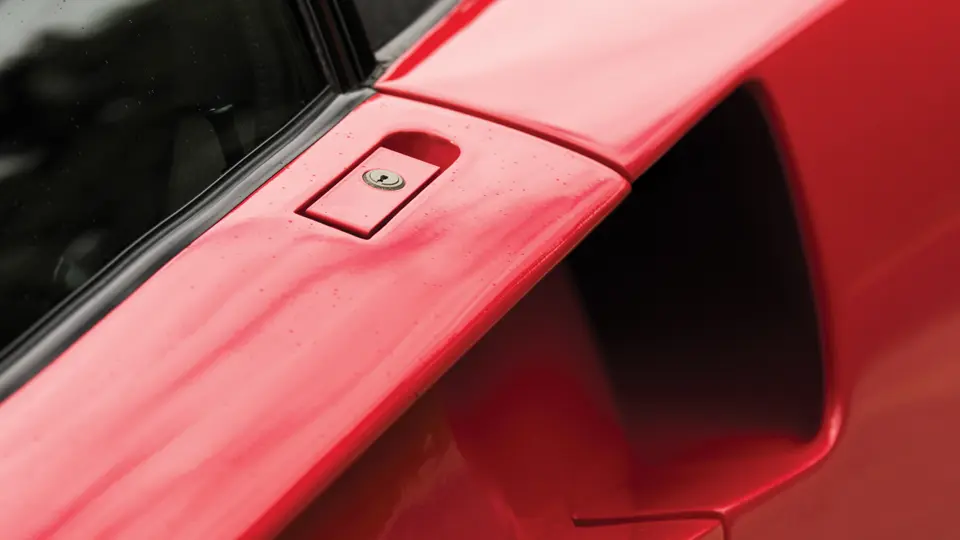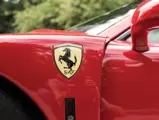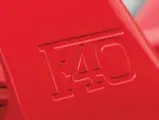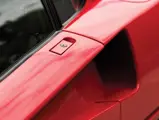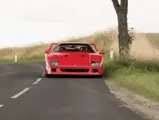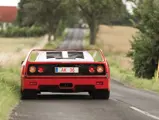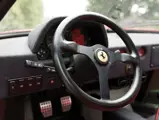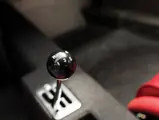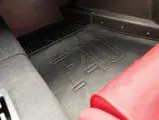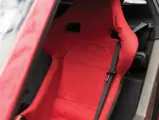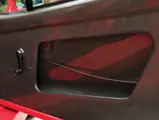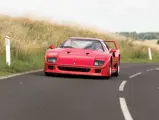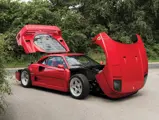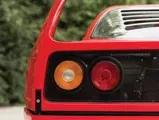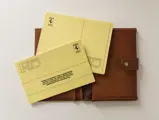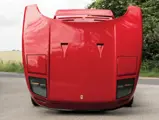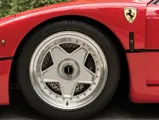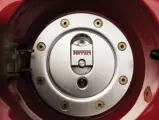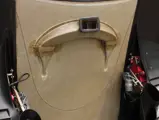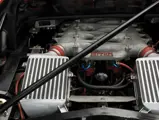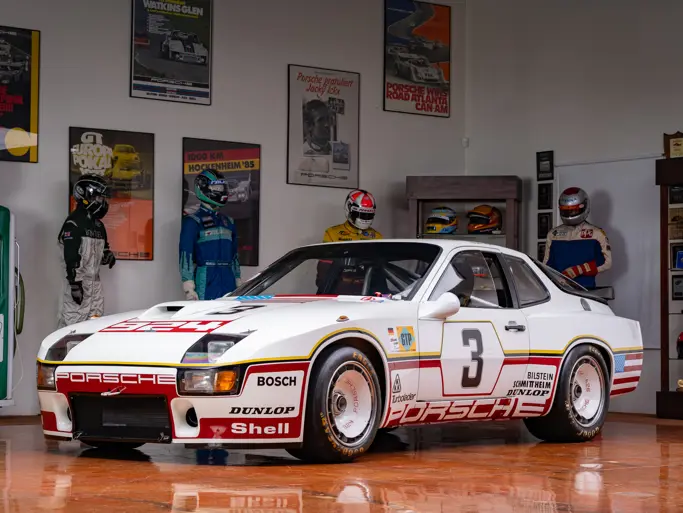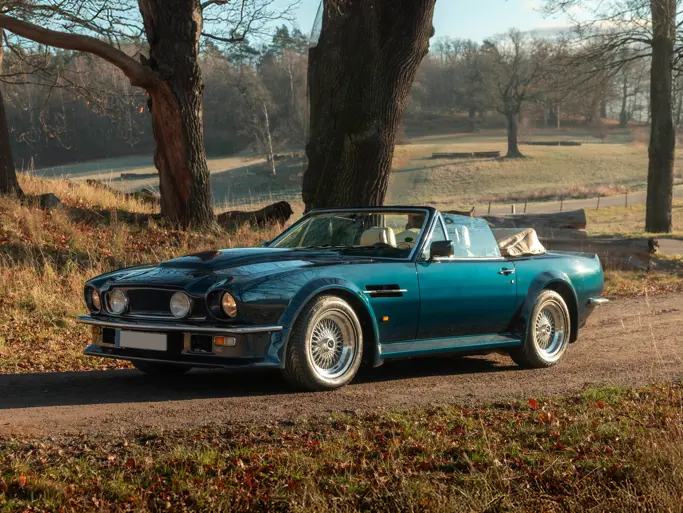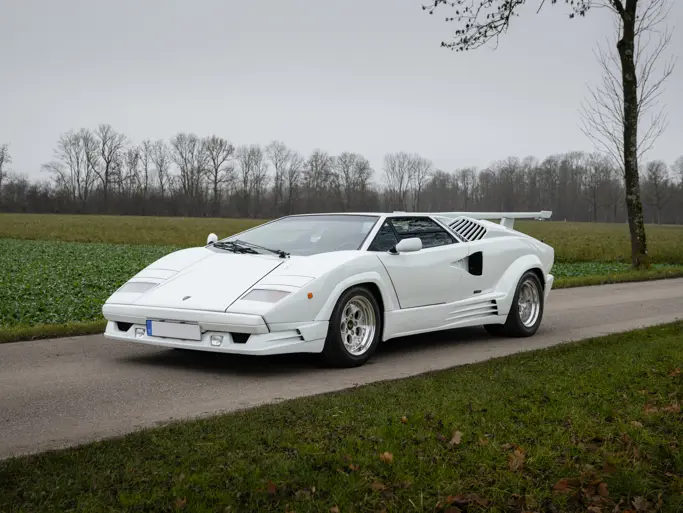
1990 Ferrari F40
{{lr.item.text}}
$1,265,000 USD | Sold
{{bidding.lot.reserveStatusFormatted}}
- All original, including factory exhaust; just 2,400 kilometers (1,490 miles) from new
- Desirable European-specification model
- Fresh full service after 16 years of private enthusiast ownership
- Original manual in folio and service booklet
478 bhp, 2,936 cc DOHC V-8 engine with twin turbochargers and Weber-Marelli fuel injection, five-speed manual transmission, front and rear independent double-wishbone suspension, and four-wheel disc brakes. Wheelbase: 96.5 in.
FORTY YEARS OF FERRARI
In 1987, not only was Ferrari approaching its 40th anniversary, but it was also engaged in a supercar war with rivals Lamborghini and Porsche. Lamborghini’s Countach took the world by storm with its radical styling and incredible performance, making it the poster-child of a generation. Adding fuel to the fire, Porsche introduced the 959 in 1986. The car was laden with many technological firsts for the automotive industry, and it was also capable of a blistering 197 mph, making it the world’s fastest road car. Of course, Ferrari would not let this stand; it needed something to silence the naysayers and put itself back atop of the record books.
Ferrari’s F40, developed from the 288 GTO Evoluzione, punched through an automotive barrier that had remained untouched, as it not only bested the 959’s top speed, but it also broke 200 mph in the process, achieving a top speed of 201.4 mph.
Unlike the 959, the F40 went about achieving 200 mph in a completely different fashion. Instead of using cutting-edge technology and loading the car down with modern-day conveniences, Ferrari, as per usual, turned to its Formula One team for inspiration and stuck with the tried-and-true formula of “less is more” in order to make the F40 as lightweight as possible. In terms of the F40’s chassis, the track dimension of the 288 GTO’s chassis was widened and a fresh steel-tube frame was reinforced with an extensive use of carbon fiber, making the platform significantly lighter than its predecessor. When stripped out for racing, Ferrari was able to save a few further precious grams. The F40 had no carpet, utilized door pulls instead of traditional handles, and could be ordered with roll-up or fixed windows (installing power-operated windows was simply out of the question). As a result of these fanatical weight-saving measures, the F40 tipped the scales at a feather-weight 2,400 pounds, paving the way for a powerful engine to rocket it into the annals of automotive history.
The F40’s engine was based on the 288 GTO’s twin-turbocharged V-8, but it was bored to displace nearly three liters. Following some additional tuning, the engine could produce 478 brake horsepower, making it the most powerful road-going Ferrari to date. This engine, combined with its lightweight nature, made the F40’s performance figures just as incredible as its top speed. A sprint from 0–60 could take just 3.8 seconds, and the car could be powered onwards to a quarter-mile time in 11.8 seconds. Braking was equally impressive, and the F40 could bring itself to a stop from 60 mph in just 119 feet, if necessary.
Production of the F40 was originally planned for just 400 units, and even with a list price of roughly $400,000, which was an astronomical price for a car at that time, many traded hands for much more than that when new. As a result of the car’s desirability, massive demand pushed total production numbers to 1,311, all of which would be in left-hand drive and liveried in classic Rossa Corsa paint. Of those examples, only 213 were delivered new to the United States, making Ferrari’s ultimate road-going machine even rarer in its largest market.
Adding to its overall historical importance, the F40 was the last car to receive the blessing of Enzo “Il Commendatore” Ferrari before his passing. Enzo had envisioned the car as an ideal way for the company to celebrate its 40th anniversary, as it would both promote all it had accomplished in its short history as well as highlight its plans for making the next 40 years just as exciting as its last. As such, the F40 signaled the end of an era for one of the most iconic marques in automotive history.
THIS F40
The F40 offered here, chassis number 87123, is identified by its serial number and metric odometer as being a European-specification model, though equipped with catalytic converters, and was originally finished as it is today in Rossa Corsa with red cloth seats. Interestingly, though shipped new to Italy, it was offered for sale in the Los Angeles Times as a brand new car, priced at $560,000 with the seller scheduled to take delivery next week, during the height of “F40 mania” in December 1990. Apparently effort had been made to entice a United States buyer into bringing the new car to that country at a higher price.
The car instead remained overseas, passing into British ownership later in the 1990s. In 1998 it was acquired by Tony Raftis of Australia, who sold it a year later to Bernhard Dransmann of Osnabrück, Germany, without ever taking it out of England. Subsequently, it was sold in 2000 to a Japanese collector in whose ownership it remained until recently.
The car has service records and registration documents back to 2006, which help to confirm its 2,400 kilometers (1,490 miles) from new. Reportedly well-serviced over the past 10 years, it recently completed a fresh service at Formula Automobile (Ferrari of Denmark), including installation of new fuel tanks, a belt service, replacement of the spark plugs, and all fluids; receipts will be on file for this work by the time of sale. Aside from this work, the F40 remains exceptionally well-preserved and original, down to its factory exhaust, and even includes the original service booklet and original owner’s manual in its leather folio. Even the paint is original, as can be seen by the carbon weaving visible through the factory coat.
The F40 remains today one of the hottest supercars on the market, and among the most desirable of all modern Ferraris. The example offered here will certainly not disappoint, with both its well-maintained original condition and its fierce performance.

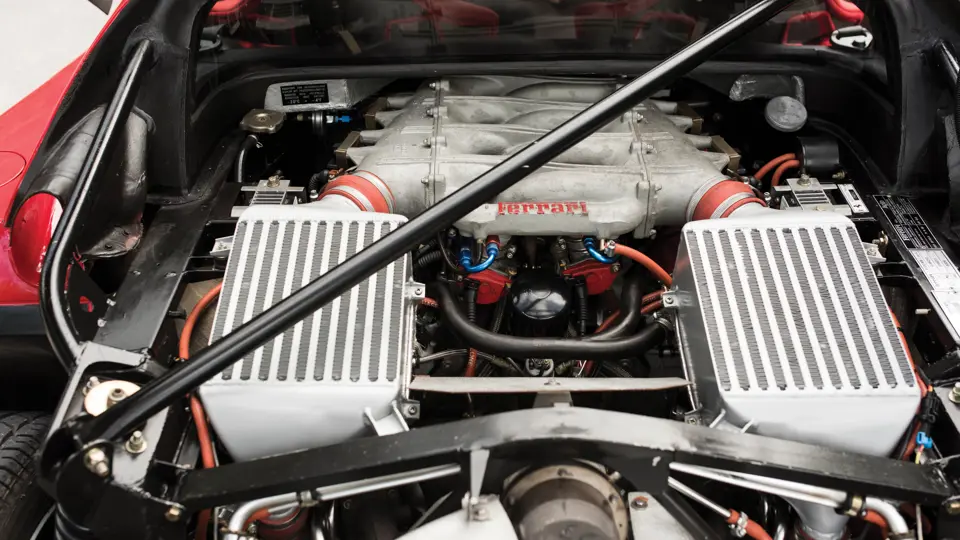


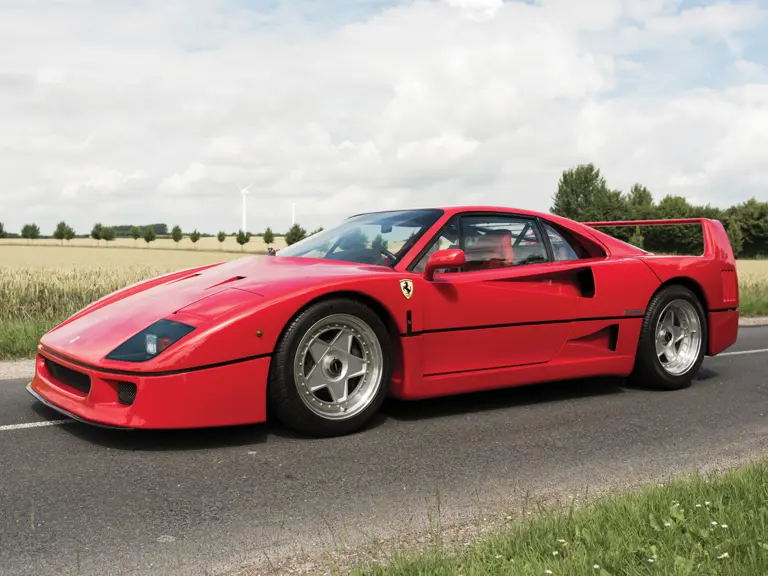
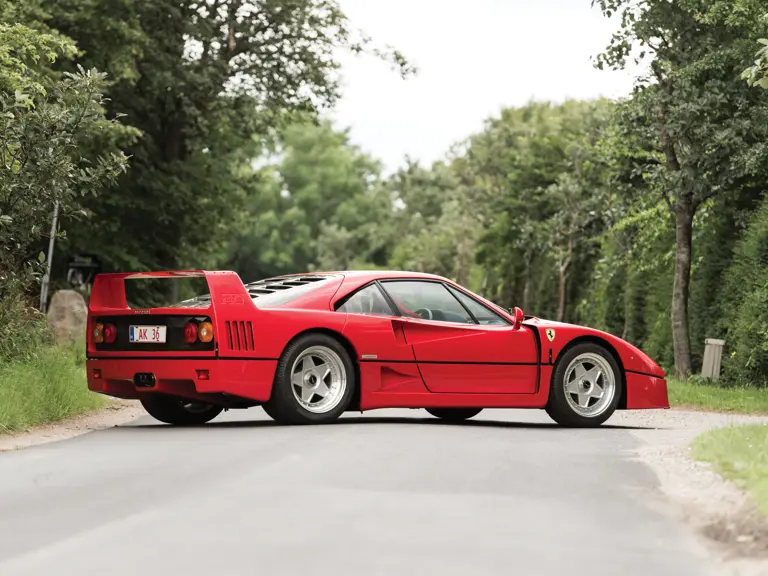

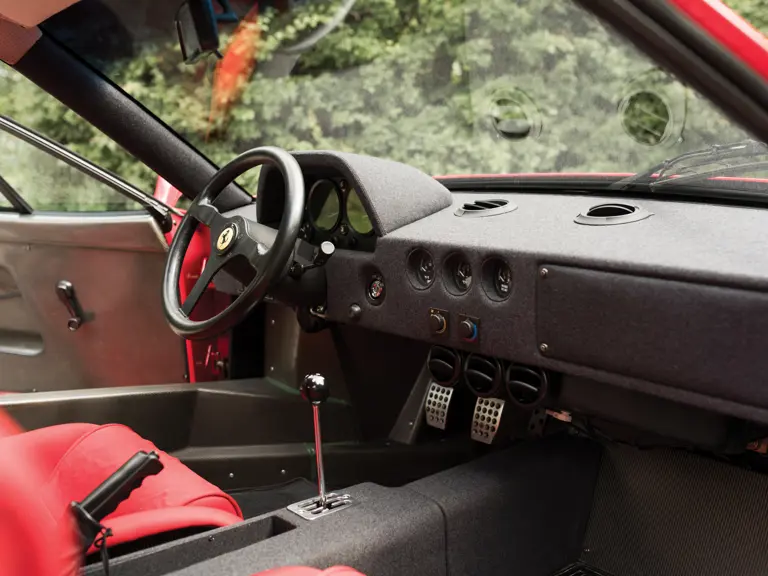



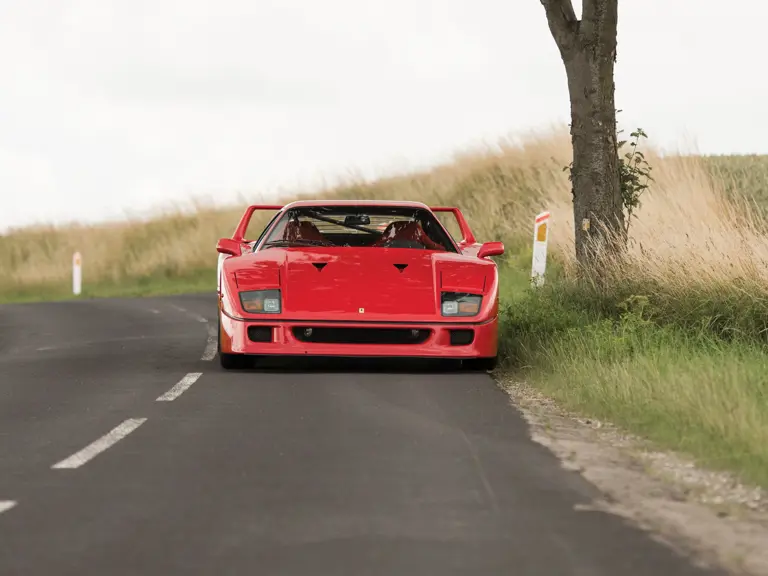
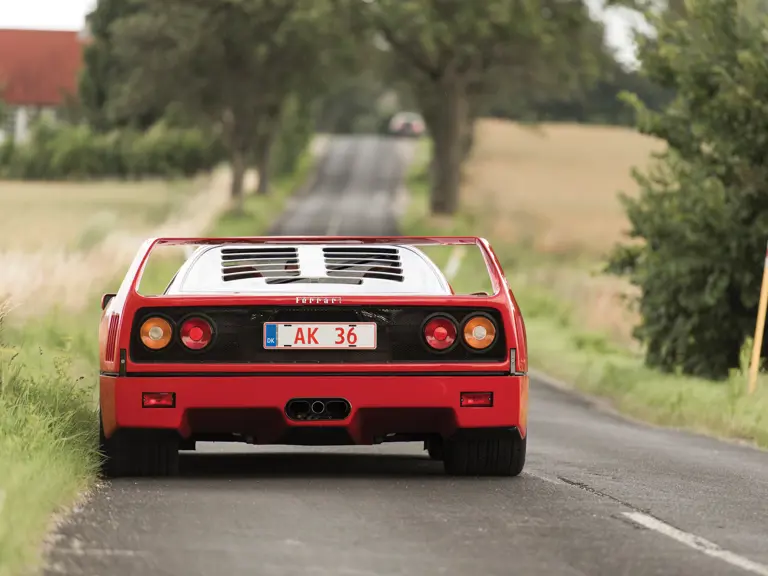
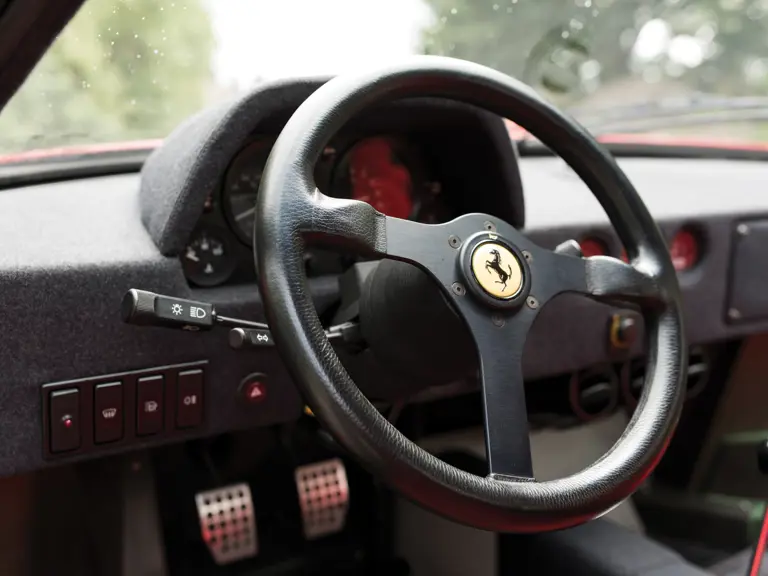

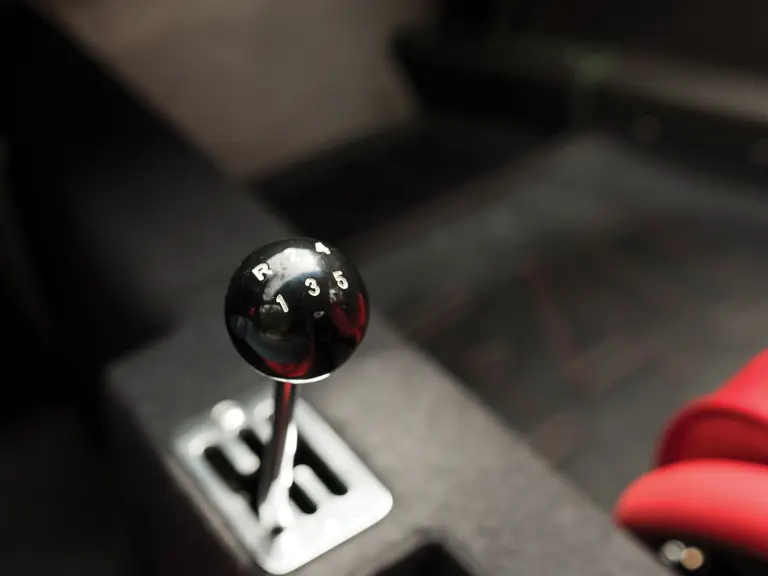
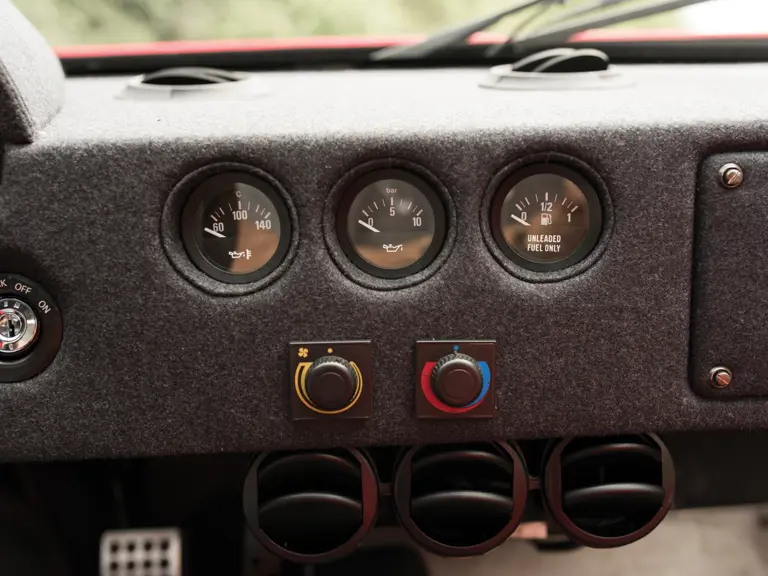
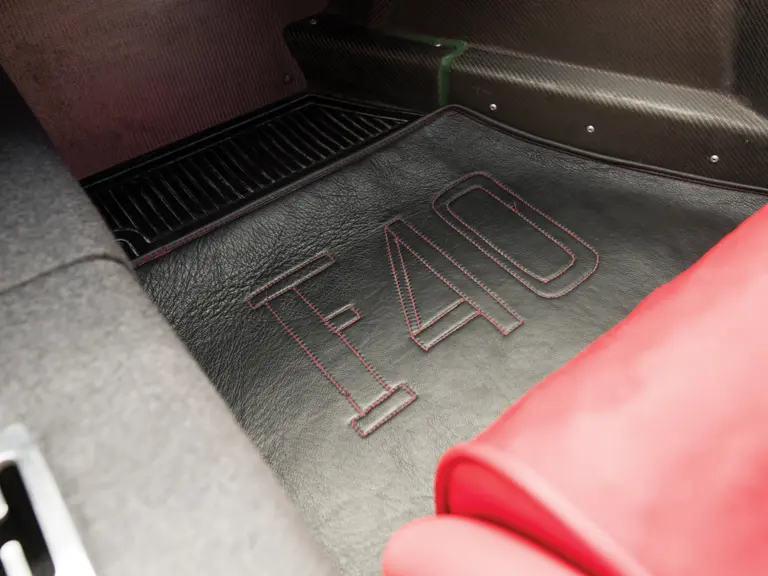
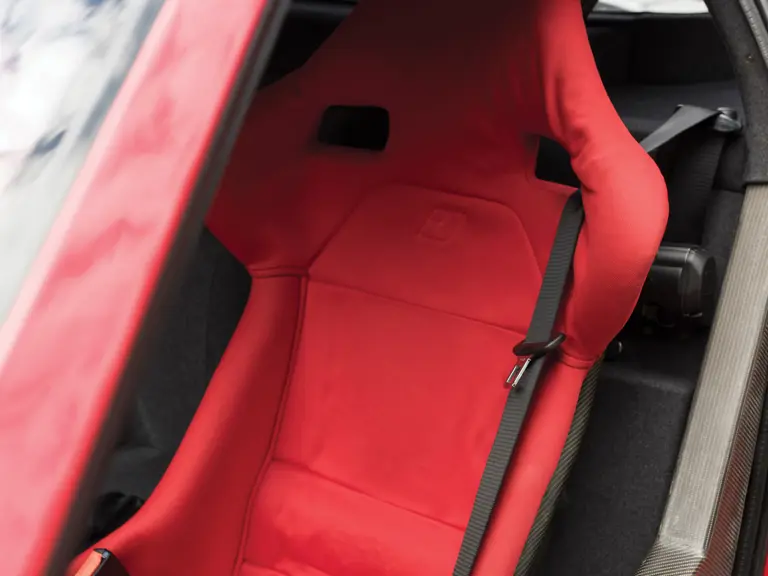
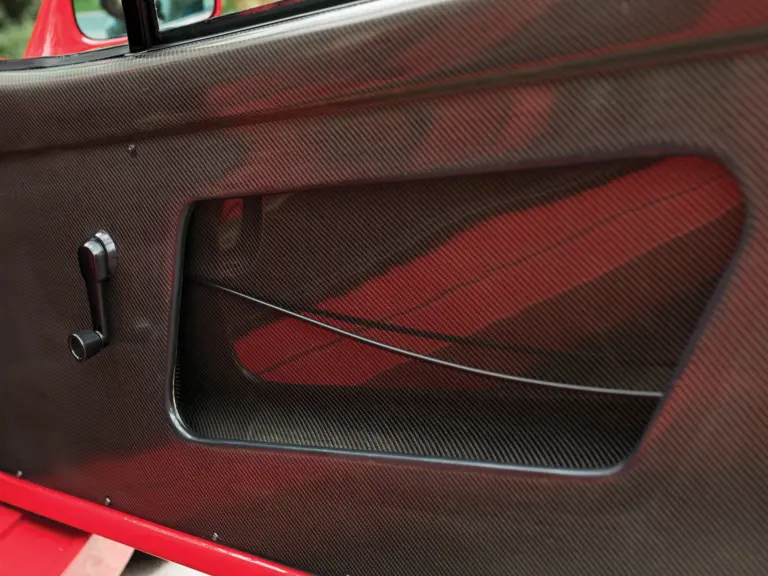


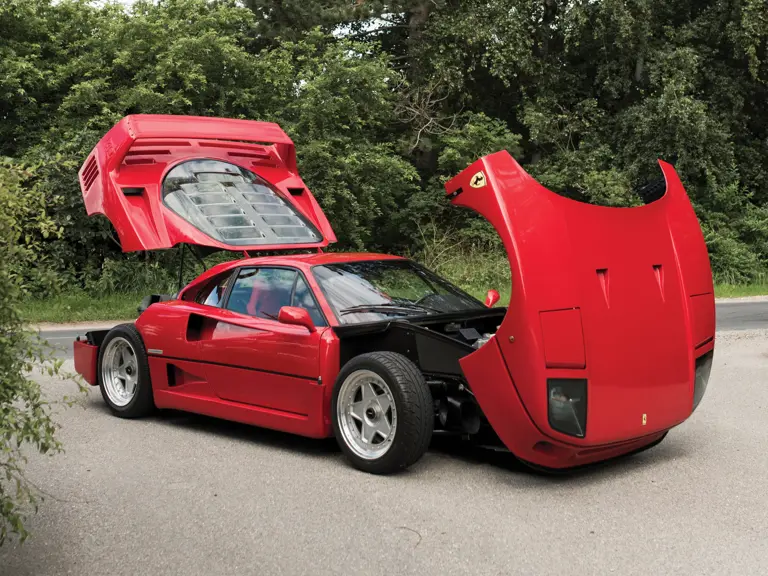
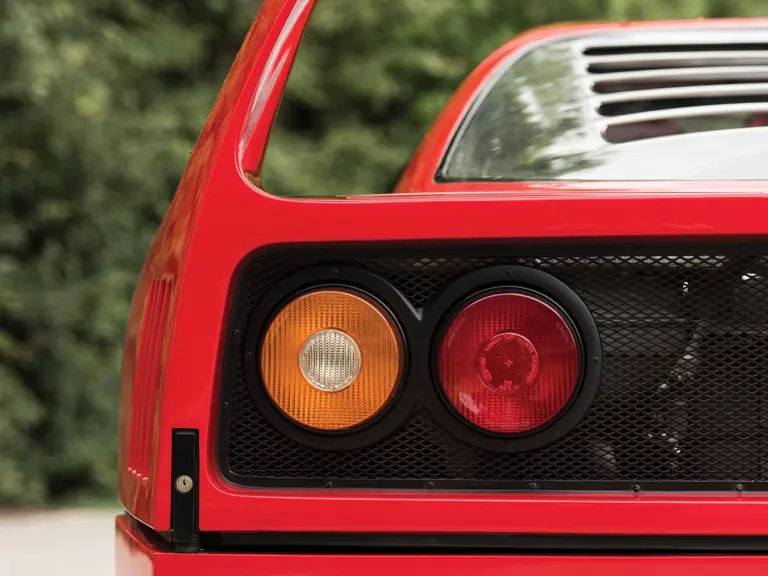
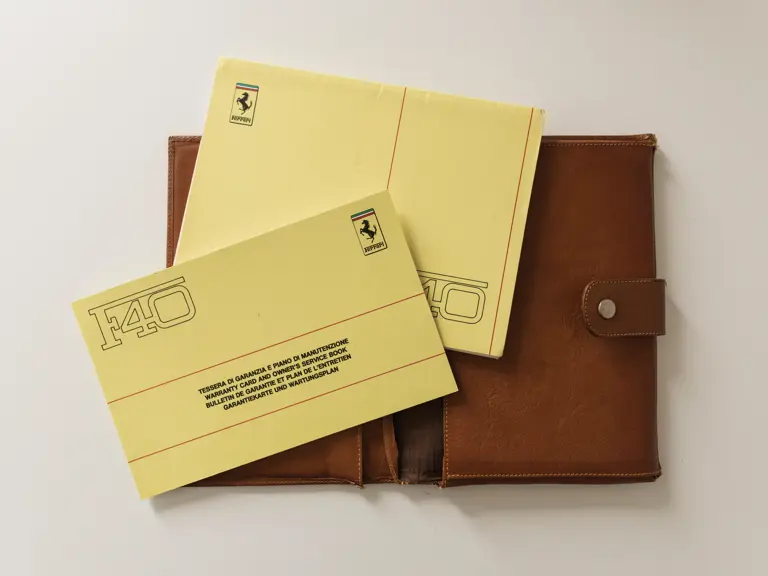
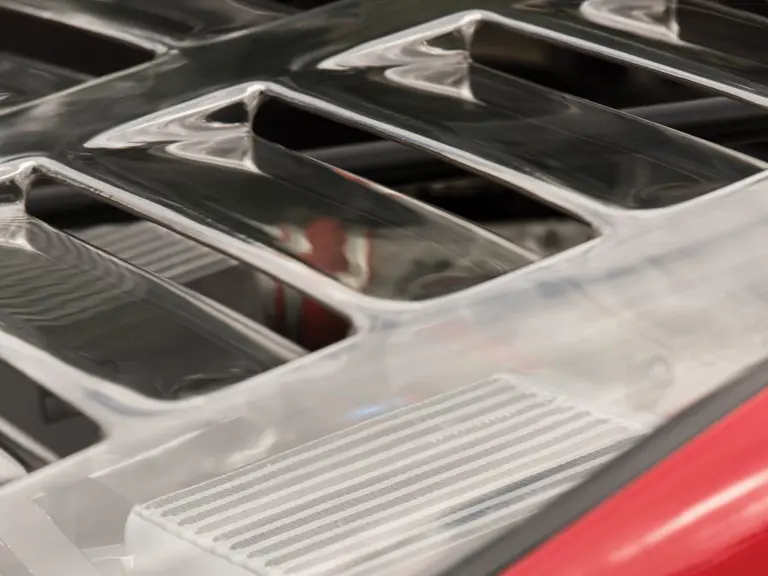
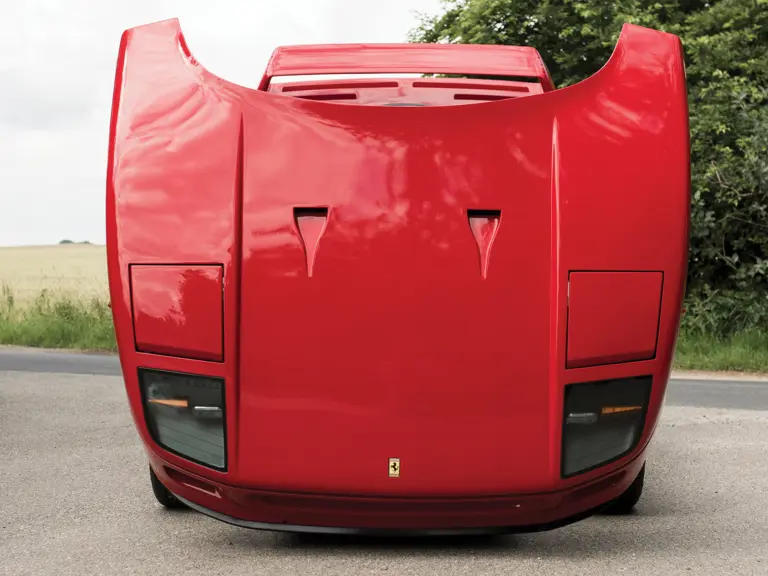
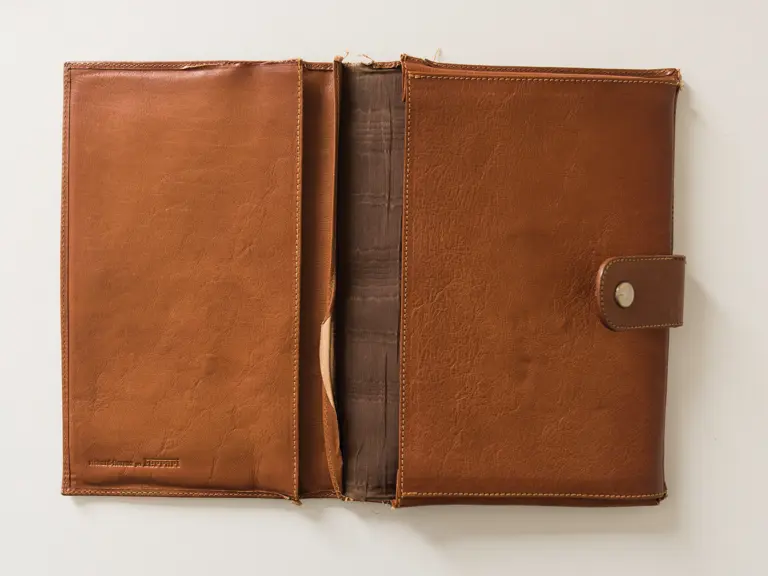
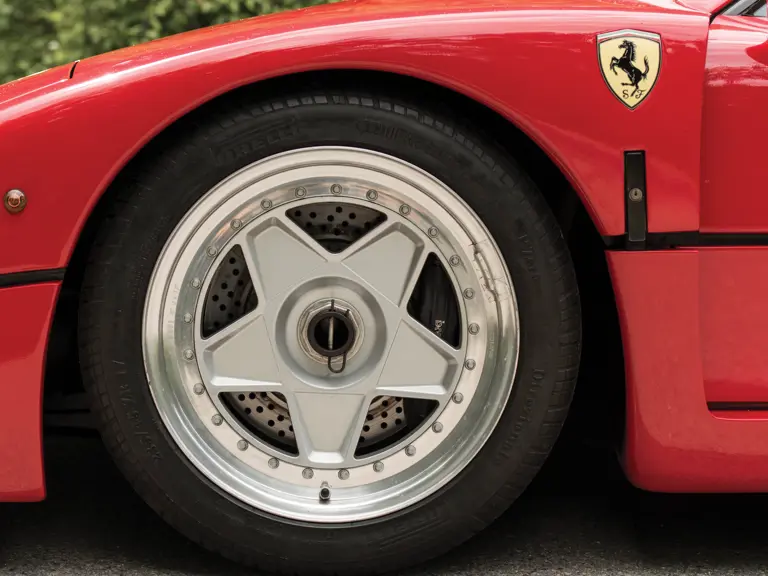
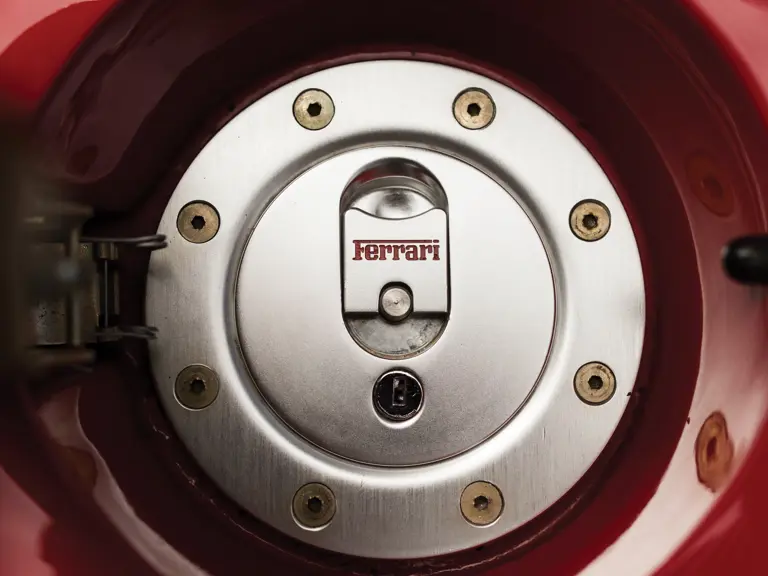
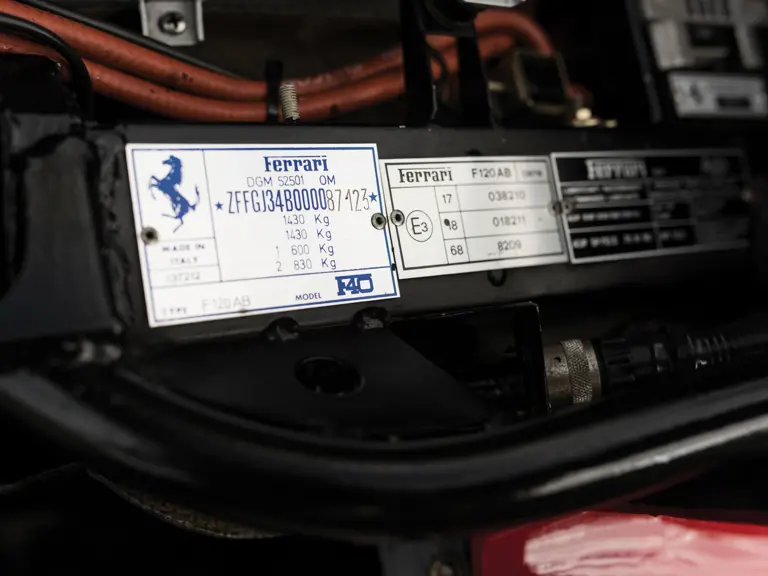
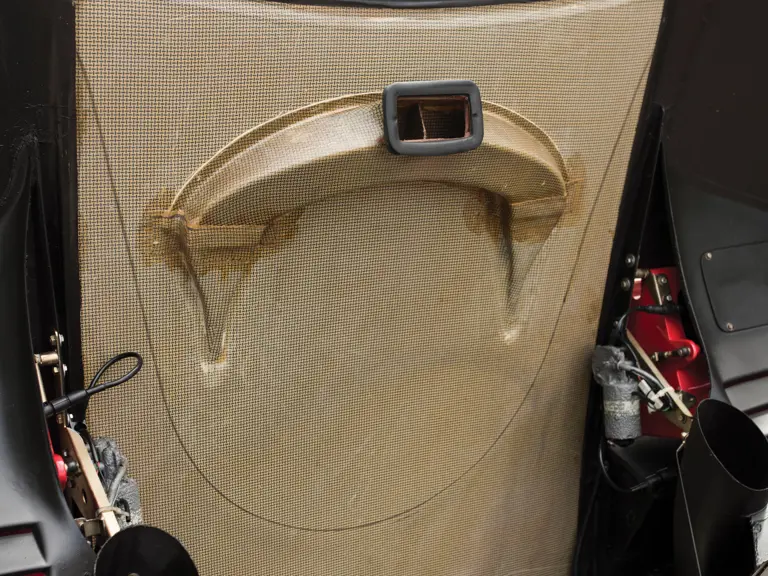
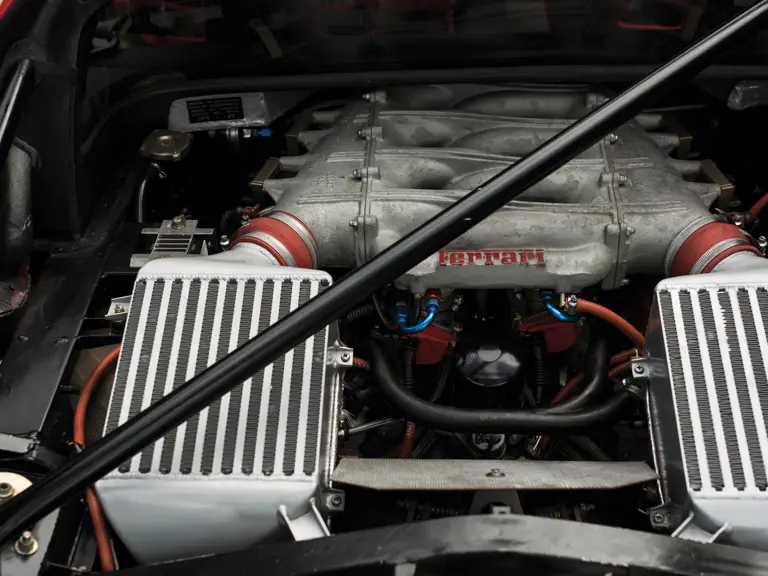

 | Monterey, California
| Monterey, California
